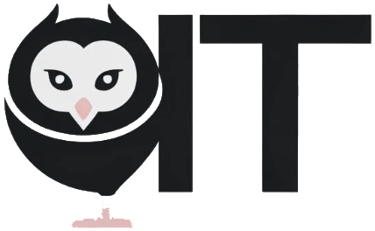Setting Up for Success with Microsoft Fabric: Real Talk from the Trenches
New to Microsoft Fabric? Avoid Costly Mistakes with These Implementation Insights. Fabric offers a world of possibilities, but a misstep can lead to headaches. Learn from seasoned IT professionals the crucial best practices to navigate your Fabric journey effectively and achieve tangible results. #MicrosoftFabricBeginner #DataLakehouse #AnalyticsPlatform #CloudMigration #TechHowTo #MSFabric #DataSolutions #ImplementationGuide #ITConsulting #DataStrategy #MicrosoftFabricImplementation #DataEngineering #DataWarehousing #CloudAnalytics #TechTips #MicrosoftFabric #DataPlatform #DataAnalytics #BestPractices #CloudData
5/19/20253 min read


The world of data is moving fast, and if you're looking to make sense of it all, Microsoft Fabric is a game-changer. Think of it as your all-in-one data hub, bringing together everything from raw data to sharp insights. But just like any powerful tool, getting it right from the start is key.
Here at Owl Insight Technologies, we've been helping businesses navigate complex data projects for years. Our team, including folks who've spent decades leading massive tech overhauls, have seen what works and what doesn't. When it comes to Fabric, it's not just about flipping a switch; it's about building a solid foundation.
So, what are the must-dos? Let's break it down in plain English:
1. Know Your "Why": Start with the Business Brain:
Before you even peek at Fabric, ask yourself: what problems are we actually trying to solve? What answers are we hunting for in our data? Clear goals are your compass. Without them, you might build something fancy that doesn't really help your business.
What We've Seen: One of our lead consultants always says, "Tech for tech's sake is a dead end." He's seen countless projects stumble because they didn't tie back to real business needs. Nail down those needs first.
2. Don't Boil the Ocean: Take it Step by Step:
Resist the urge to go all-in on Fabric from day one. Start small. Pick a key area where better data insights can make a real difference and run a pilot project. This lets your team get their hands dirty, learn the ropes, and fine-tune your approach without massive risk.
Think Agile: Our project managers swear by breaking things down into smaller, manageable chunks. It's how you learn and adapt along the way.
3. Treat Your Data Like Gold: Governance and Security First:
Fabric will handle a ton of your data, so you need rules. Who owns what? Who can see what? How do we keep it clean and accurate? Get these data governance and security frameworks in place early. It's not the most glamorous part, but it's crucial for trust and compliance.
Real-World Lesson: We've helped companies recover from data breaches and messy data migrations. Trust us, getting this right upfront saves a world of pain later.
4. Build it to Grow: Think Scalability from Day One:
Consider where you are now, but also where you see yourself in a year or two. Design your Fabric setup so it can handle more data and more users without grinding to a halt. Fabric is flexible, but a little foresight in your architecture goes a long way.
Think Long-Term: Our data architects always stress the importance of future-proofing. You don't want to rebuild everything when your business takes off.
5. One Lake, One Truth: Embrace the Central Hub:
Fabric's OneLake is a big deal. It's your central data repository. Use it! It cuts down on data silos and makes it easier for everyone – from data engineers to business analysts – to work from the same page.
Collaboration Booster: When everyone's looking at the same data in the same place, magic happens. Insights come faster, and teams work together more smoothly.
6. Level Up Your Team: Invest in Fabric Skills:
Fabric is powerful, but your team needs to know how to use it. Invest in training. Get them comfortable with the different parts of Fabric so they can build, manage, and get the most out of it.
Empower Your People: Giving your team the right skills is the best investment you can make in your Fabric journey.
7. Keep an Eye on Things: Monitoring is Key:
Don't just set it and forget it. Implement monitoring to track how your Fabric environment is performing. Catching small issues early can prevent big headaches down the road.
Be Proactive: Think of it like a health check for your data systems. Regular monitoring keeps things running smoothly.
8. Teamwork Makes the Dream Work: Share and Learn:
Implementing Fabric is often a team sport. Encourage your data engineers, scientists, analysts, and IT folks to collaborate, share knowledge, and learn from each other.
Knowledge is Power: The more your team communicates and shares their experiences, the faster you'll see results with Fabric.
The Bottom Line:
Microsoft Fabric is a fantastic tool, but its real power comes when you implement it thoughtfully, with a clear understanding of your business goals and a focus on best practices. We've seen it transform businesses, and with the right approach, it can do the same for you.
Thinking about making the leap to Fabric? Or maybe you're already on the journey and hitting some bumps? We're always here at Owl Insight Technologies to lend a hand and share what we've learned in the trenches. Let's chat about how Fabric can truly work for your business.
Consultancy
Expertise in project management and strategic consulting.
Partner with us
Insights
info@owlinsight.io
+1234567890
© 2025 Owl Insight Technologies. All rights reserved.
Perched Above the Noise, Delivering Clear IT Strategies
